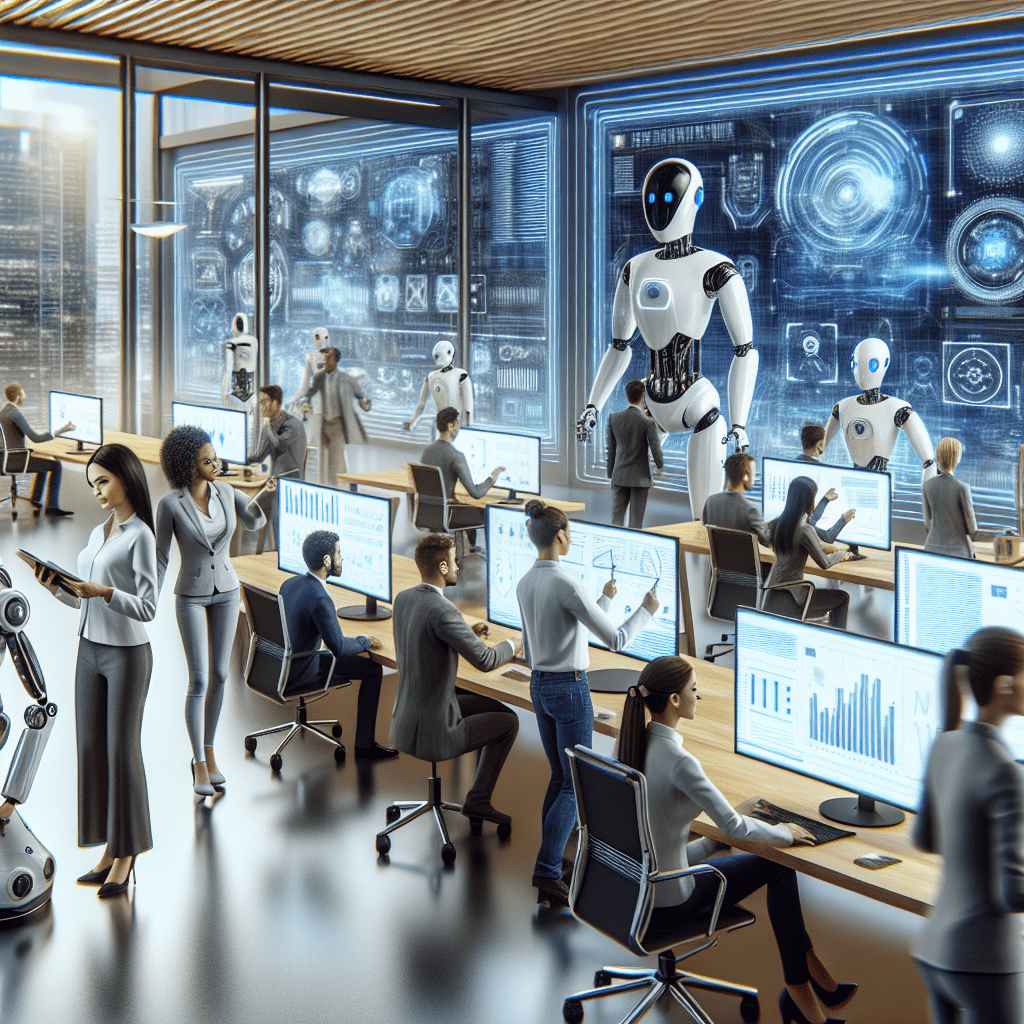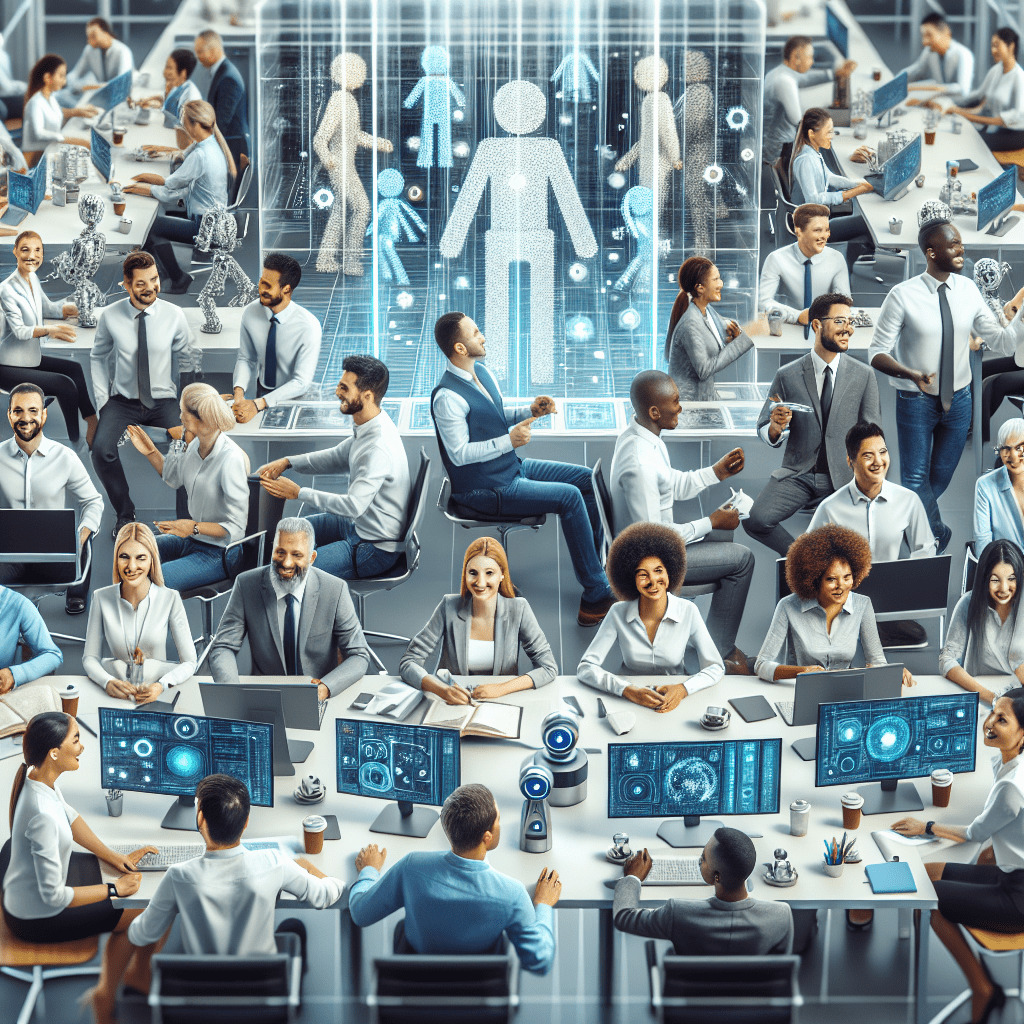Table of Contents
In today’s fast-paced, technology-driven business landscape, organizations worldwide are turning to artificial intelligence (AI) to enhance workplace productivity and gain a competitive edge. From automating repetitive tasks to providing intelligent insights, AI is transforming the way we work, enabling employees to focus on higher-value activities and fostering innovation. This article explores the global trends in AI adoption for workplace productivity and examines the benefits, challenges, and future implications of this transformative technology.
The Rise of AI-Powered Productivity Tools
Across industries and regions, companies are increasingly embracing AI-powered productivity tools to streamline workflows and boost efficiency. These tools range from intelligent virtual assistants and chatbots to predictive analytics and machine learning algorithms. According to a recent survey by Gartner, 37% of organizations have implemented AI in some form, with a significant portion focusing on enhancing workplace productivity.
One notable example is the widespread adoption of AI-powered project management and collaboration platforms, such as Asana and Trello. These tools use machine learning algorithms to automate task allocation, prioritize workflows, and provide intelligent suggestions, enabling teams to work more efficiently and effectively.

Automating Repetitive Tasks and Freeing Up Human Potential
One of the primary ways AI is improving workplace productivity is by automating repetitive and time-consuming tasks, allowing employees to focus on more strategic and creative work. For instance, AI-powered tools can automatically sort and prioritize emails, schedule meetings, and generate reports, saving employees valuable time and effort.
In the financial sector, AI is being used to automate data entry, reconciliation, and compliance checks, reducing the risk of human error and enabling finance professionals to focus on higher-value activities, such as financial analysis and strategic decision-making.
As Satya Nadella, CEO of Microsoft, states, “AI will enable us to do more with less, freeing up human potential to focus on higher-level tasks and creating new opportunities for growth and innovation.”
Enhancing Decision-Making with AI Insights
Another key benefit of AI in the workplace is its ability to provide intelligent insights and support data-driven decision-making. By analyzing vast amounts of data from various sources, AI algorithms can identify patterns, predict trends, and provide recommendations, enabling managers and executives to make more informed decisions.
For example, in the retail industry, AI-powered analytics tools can analyze customer data, sales trends, and market conditions to optimize pricing, inventory management, and marketing strategies. This not only improves operational efficiency but also enhances the customer experience and drives business growth.

Overcoming Challenges and Ensuring Responsible AI Implementation
While the benefits of AI for workplace productivity are clear, organizations must also navigate the challenges and ethical considerations associated with AI implementation. One common concern is the potential for job displacement as AI automates certain tasks. However, experts argue that AI will primarily augment human capabilities rather than replace jobs entirely.
As Erik Brynjolfsson, director of the MIT Initiative on the Digital Economy, notes, “The key to success in the AI era is not to race against the machines but to race with the machines. It’s about figuring out how to use AI to enhance and amplify human capabilities.”
To ensure responsible AI implementation, organizations must prioritize transparency, fairness, and accountability in their AI systems. This involves designing AI algorithms that are unbiased, explainable, and aligned with human values. Additionally, companies must invest in reskilling and upskilling their workforce to prepare employees for the AI-driven future of work.
The Future of AI-Enhanced Workplace Productivity
As AI technology continues to advance and become more accessible, we can expect to see even more innovative applications for enhancing workplace productivity. From personalized employee coaching and development to real-time language translation and immersive virtual collaboration, AI has the potential to revolutionize the way we work and interact with technology.
However, the success of AI in the workplace will depend on the ability of organizations to adapt their culture, processes, and skills to leverage the full potential of this transformative technology. By embracing AI as a tool for augmenting human capabilities and fostering a culture of continuous learning and innovation, companies can unlock new levels of productivity, creativity, and growth in the digital age.

Conclusion
The global trend of harnessing AI for improved workplace productivity is transforming the way we work and driving significant benefits for organizations and employees alike. By automating repetitive tasks, providing intelligent insights, and augmenting human capabilities, AI is enabling businesses to operate more efficiently, make better decisions, and foster innovation.
As we navigate the challenges and opportunities of AI in the workplace, it is crucial to prioritize responsible implementation, invest in employee skills development, and cultivate a culture that embraces the potential of human-machine collaboration. By doing so, we can create a future of work that is not only more productive but also more fulfilling and rewarding for all.
